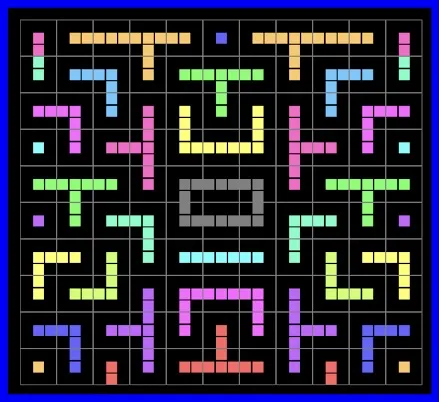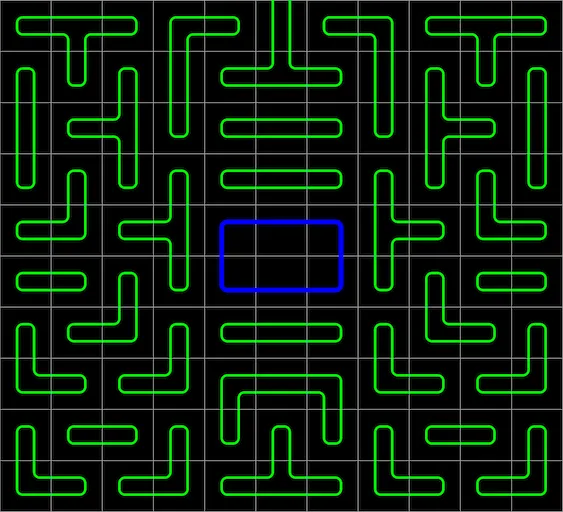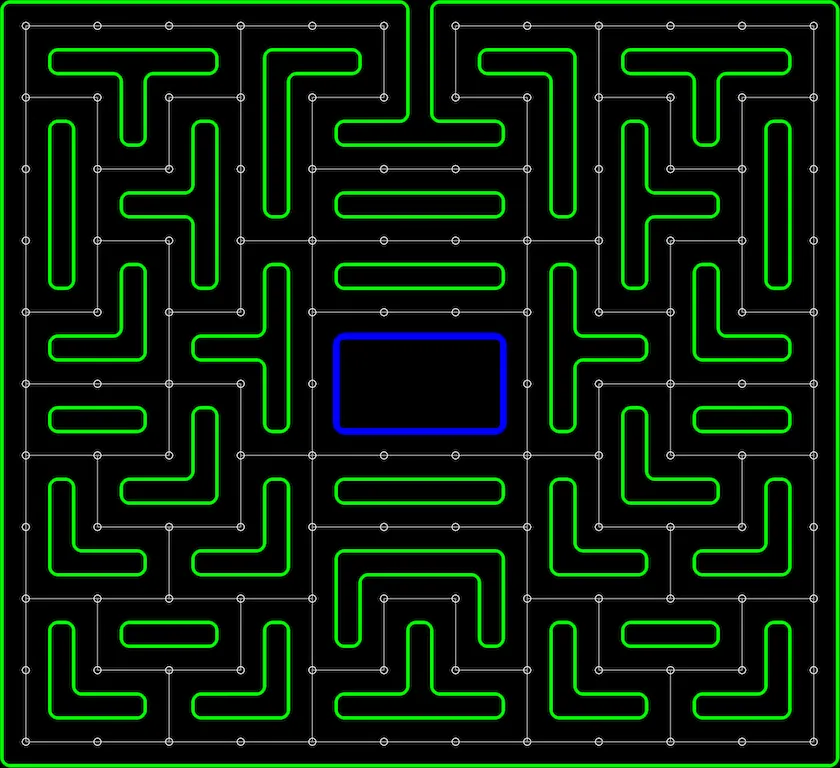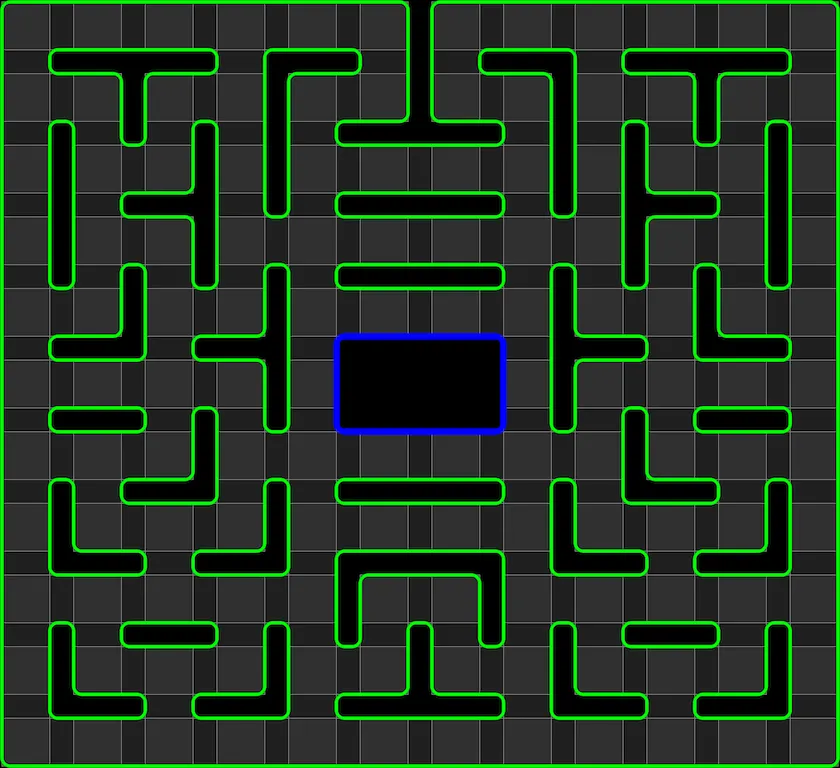This Is Not Pacman, Part 1
Not Pacman!
In the last month or so, an opportunity has arisen to work on a fun and interesting project that should actually result in a tangible commercial product. It’s not strictly in my usual line of work these days, but it’s something I’ve done before many moons past.
So, given that I had a stroke of inspiration, I thought I’d turn my hand to it again. I reached out to a company in the industry that I admired and told them about my proposal. After a couple of weeks of tweaking and munging, we had something we were both happy with, and the project was greenlit.
This post isn’t directly about that project — but it is about something related.
And no. It’s not Pacman.
Still Not Pacman
For reasons as yet unspecified, the unnamed project in question requires a simple game to be produced. It has to besimple enough to be easily understood from both a gameplay and a code perspective, while still being complex enough to generate sufficiently interesting[1] data.
I noodled around with this problem over a weekend and — with a bit of web searching — came up with an idea that I think will fit all the necessary criteria. In this case, a relatively simple “clicker”-style maze-based tower defense game using procedural generation to create depth fits the bill. It allows me to create a relatively simple-to-program game without having to spend an inordinate amount of time creating content.
Pacman-Style Mazes Are Surprisingly Hard To Make
Naturally the first step (at least in my mind) is to figure out a good way to generate interesting mazes. Given the nature of tower-defense games, I wanted to have a relatively simple maze layout reminiscent of the classic arcade style.
For most people (at least those above a certain age), I would imagine that if I said “arcade-style mazes”, the first thing that would pop into their head would be “Pacman”, and I’m afraid I was no exception.
I decided to do a little research into randomly generating Pacman-style mazes only to find that (a) it’s harder than it looks and (b) it’s a solved problem.
Specifically, Shaun LeBron’s Website details an excellent approach in great detail, and I looked to this for inspiration[2].
Shaun’s approach is well described on his website, so I won’t bother to detail it here beyond a basic summary.
His approach is as follows:
- Fill a playfield of half the intended width and full intended height with tetrominoes, packed as well as possible from right to left. (Imagine a game of Tetris on its side.)
- Make some aesthetic tweaks to the final packed shapes to eliminate undesirable features.
- This is the right half of the maze, and it is mirrored to create the left half.
- Boundaries between tetrominoes define the paths of the maze.
The modifications I have made in the Python conversion of the code are pretty simple — I removed tunnels (as I have no use for them in my game), and I tweaked the maze generation slightly for my own aesthetic and gameplay reasons.
The following images show early debug renderings of generated mazes. The different coloring for the various wall segments indicate the “wall grouping” — a feature used by Shaun’s algorithm to determine which walls to grow or shrink.


Notice here that the walls are one tile thick, whereas the paths are two tiles thick. This will be important later for rendering and — more importantly — path-finding, as it adds a wrinkle to the process.
The second image above shows how the maze can be split into a set of 3×3 tiles. Analysis of these shows that we can build an arbitrary (within the limits of those that the generator can generate) Pacman-style maze with the following tileset, as shown.


Segmentation For Path-Finding
If we wanted to path-find in a maze like this, it’s pretty evident that we could treat the gray grid intersection points as nodes, and the grid edges (where they do not cross a wall) as paths with a traversal cost of 1, as shown in the following image.

For various reasons that I will not go into here, but that are relevant for the final product[3], I made a deliberate choice not to do it this way. Instead, I chose to partition the maze in “board game” fashion, as shown in the following image:

In the above scheme, the cost of moving between tiles is dependent on the shape of the tile. Moving across rectangular tiles (shaded darker gray) incurs no cost. Only the square tiles (in lighter gray) incur a cost for path-finding.
Conceptually, both images are the same; the first shows the path as vectors of length 3 (in terms of sub-tiles), with the movement cost being incurred for each vector traversed. The second shows the paths as spaced-out squares with the center of each square corresponding to the endpoint of each vector in the first image.
I acknowledge that — at first glance — the second scheme is a little more complex visually (and also slightly in terms of implementation) but I promise I have a good reason for doing it this way.
Anyway, that’s enough for this post. All the code used to generate the mazes you see here (and more) will be open sourced by the end of the project. Additionally, I’ve been remiss in keeping a regular posting schedule, so I want to get this first post on this topic wrapped up. My next post will cover the various path-finding algorithms, as well as some other details of my progress on this part of the overall project.
This is intended to be the first post in a series that detail my progress not only on the development of this game, but also in the parent project. I’m looking forward to being able to announce it officially, but I’ll need to make significantly more progress before I feel comfortable in doing so.
Footnotes
1.
I have a specific definition of “interesting” in mind here that I’m not going to explain. When I get further along in the project, I’ll discuss it in more detail, but I don’t want to jinx things just as I’m getting started.
↩2.
And by “inspiration” I mean I stole it wholesale and converted his algorithm to Python (with a few tweaks for my own nefarious purposes).
↩3.
Again, I’m not intending to be deliberately obtuse, but I do want to keep the “why” under wraps until the project I’m working on is formally announced.
↩